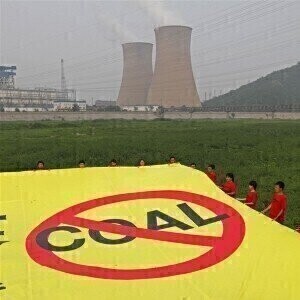Fuel for Thought
Can Abandoned Coal Mines Be Repurposed for Geothermal Energy Generation?
Mar 29 2023
Readers may be unaware that a quarter of residential properties in the United Kingdom are located on coalfields – and they may be even less aware that such a situation may provide a further stimulus to the UK’s decarbonisation of its energy infrastructure.
Abandoned underground mines often fill with water when pumps are turned off. This water is heated through geological processes, maintaining a stable temperature throughout the year. The Coal Authority estimates that these mines' continuously replenished water could supply heat for coalfield areas, as well as heat and energy for horticulture, manufacturing, and other applications.
The UK's abandoned coal mines offer a vast geothermal energy source. This low-carbon, sustainable heat source could compete with public gas prices and provide up to 75% carbon savings compared to gas heating under ideal conditions.
The first step in establishing the facility would be to drill boreholes into the water-filled mine, approximately 300-400 meters deep. These boreholes would serve as access points to the underground mine water, heated by geothermal processes to temperatures of 18 to 20°C.
The facility would be equipped with heat exchangers, which would transfer the heat from the extracted mine water to a separate, closed-loop system, containing a heat transfer fluid. The warmed fluid would then be circulated through a district heating network, providing low-carbon, sustainable heat to nearby homes and businesses. Indeed, mine energy could make coalfield areas more attractive to investors, revitalizing parts of the UK that have been starved of investment for decades.
The facility would also incorporate heat pumps to increase the temperature of the extracted water, if necessary, to meet heating demands. These pumps would use a small amount of electricity to efficiently raise the water temperature for the end-users.
As part of its sustainable design, the facility would use alternative materials, such as non-metallic pipes, for heat distribution. This approach would minimize heat loss and reduce costs compared to traditional district heating schemes, making the facility more viable.
Furthermore, these rehabilitated mines could significantly contribute to the British state’s future low-carbon, renewable energy promises. Many local authorities have declared a "climate emergency" and pledged to become carbon neutral in the coming years. Heat accounts for 50% of the UK's energy needs, mainly from gas. However, by 2025, the government aims to eliminate gas connections in new buildings. Technologies like mine energy will likely play a significant role in meeting Britain's energy requirements.
Using heat from abandoned coal mines is an innovative, practical approach to decarbonizing heat supplies. Examples of current projects include Seaham Garden Village, Hebburn Minewater District Network, Gateshead District Heat Network, and a district heating project in Nottingham. These projects demonstrate how mine water, heated by geothermal processes, can be utilized for low-cost, low-carbon, and sustainable local space heating.
These sustainable energy sources offer broader benefits, such as attracting investment, creating jobs, and lowering fuel bills for Seaham Garden Village and other coalfield-based district heating networks.
Digital Edition
PIN 25.3 June/July
June 2024
Analytical Instrumentation - Recent Advances In Various Bench Scale Accelerated Oxidative Testing Methods For Fuels - Petrochemical Industry: Anton Paar Solutions Streamline Processes, Reduce H...
View all digital editions
Events
Jul 30 2024 Jakarta, Indonesia
Jul 30 2024 Jakarta, Indonesia
China Energy Summit & Exhibition
Jul 31 2024 Beijing, China
Jul 31 2024 Chengdu, China
Aug 05 2024 Moon Township, PA, USA


















